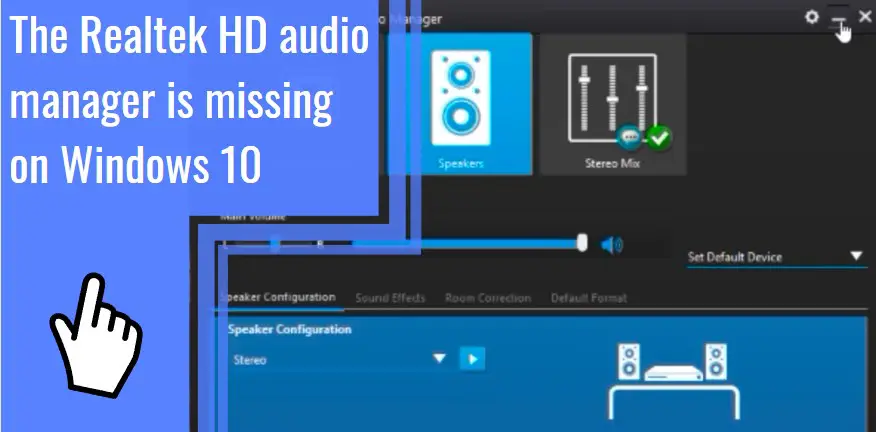What you find on this page:
The GE Profile Dishwasher has become a favorite appliance for homeowners looking for a high-quality dishwasher at a great price. However, if your dishwasher isn’t working correctly, follow these simple steps to diagnose the issue and solve the GE profile dishwasher won’t drain problem.
Why is my GE Dishwasher Not Draining?
There are a few reasons why your dishwasher might not be draining properly. Here are 8 possible causes and solutions:
1. Jammed drain pump motor
If the drain pump motor is jammed, it can cause the entire unit to stop draining. To resolve this, you’ll need to remove the cover on the back panel of the dishwasher and pull the drain hose off the pump. Finally, remove any debris from around the pump.
2. Clogged drain hose under the sink
If there’s a clog in the drain hose, the water will only run through the hose when the dishwasher door is open. To clear this clog, use a plunger to push the blockage into the drain pipe. Then, turn off the power supply to the dishwasher and wait until the water drains completely before turning the power back on.

3. Check for a Blockage In The Sump
A blockage in the sump can be pushed through the pipe with a plumber snake or a metal hanger wire. You can also use high-pressure water to flush the pipes. Call a professional service provider specializing in plumbing issues for stubborn blockages.
4. Faulty Drain Pump Impeller
The drain impeller dumps water from the drain hose into the drain line or garbage disposal. The entire system must be replaced if the drain pumps fail and sewage sprays everywhere. It is, however, fairly easy to replace a broken drain pump. This is how you do it:
- Disconnect the water and power supplies.
- Remove the dishwasher from under the counter by unscrewing the mounting brackets.
- The unit should be placed on a flat surface. Disassemble the washer to examine the drain pump.
- Attach the pump outlet to the center spray nozzle after removing the clamp holding the sump.
- Unclamp the drain return line. Have a container or towel nearby, as there is likely to be water in the hose.
- Support the motor with a clamp. Remove the top of your shower and loosen the bottom to remove it.
- Place the pump and motor assembly in a suitable work area. Remove and discard the cutter blade while holding the motor shaft.
- Discard the grater. Discard the wear rings and replace the retainer.
- Remove the impeller. Ensure the shaft is vertical. Disconnect the pump from the motor. Slide it down the shaft, then set it aside
- Change the seal on the pump before disposing of it. Dispose of any debris and reassemble the pump.
5. Faulty Drain Pump
If the GE dishwasher drain pump is not functioning correctly, water cannot be discharged from the machine. Check the drain pump with a multimeter to see if it has continuity. You will have to replace the drain pump if there is no continuity or it has power but does not drain the GE dishwasher.

6. Failed Drain Solenoid
A failed drain solenoid is one of the most common causes of GE profile dishwashers not draining. The solenoid opens the GE dishwasher drain valve so water can escape. Follow the instructions:
- Disconnect the power and remove the bottom panel of the dishwasher before disassembling it to prevent food from getting on the electrical components.
- Once it is loose, you can see the drain solenoid connected to the main pump. Apply pressure onto the solenoid with needle nose pliers.
- If the solenoid doesn’t move, it will need to be replaced. If it moves, it is still generally good, but you should still try this to troubleshoot further:
- Connect the power source again
- And run the dishwasher.
- Turn the timer mechanically until the solenoid turns on
- Is the timer not engaging and blinking? Replace the solenoid
- Start a GE profile dishwasher force drain cycle and wait for the solenoid to engage if your dishwasher has electronic controls.
- Replace the solenoid if it does not engage.
7. Defective Drain Check Valve
You should also check the drain valve when you check this area. It is possible for this part to become clogged or even stop working altogether over time.
First, clean the valve if it’s clogged with debris. If you have already done this, the valve will need to be replaced, and the unit will not work. As these parts cannot be repaired, you will need to purchase a new one and replace them.
8. Chopper Blade Area Clogged With Food
Dishwasher chopper blades chop items into small particles before draining. This process prevents clogged sink and dishwasher lines. Moreover, too much debris can stop the dishwasher from draining.
You should check the chopper blade for damage and remove all debris. The blade needs to be replaced if damaged. The procedure is as follows:
- First, the power should be turned off.
- Next, remove the lower and upper racks from the dishwasher by opening the door. Place them aside.
- Lower the spray arm and remove the retaining nut.
- Take the spray arm off.
- Release the tower by pressing the clips.
- Lift the lower spray arm bearing from the center of the tub.
- Disconnect the screws holding the filter housing and pump cover in place.
- Remove the cover of the chopper assembly.
- Now you should be able to see the blade. If it’s damaged, replace it
- You should also clean any food debris on the screens.

GE dishwasher not draining completely
GE dishwashers with clogged drain pumps are usually the result of food bits getting stuck in them and causing clogs by the buildup of food, detergent, and trash.
Other causes of the problem may include blocked air gaps or incorrectly installed garbage disposals.
If your GE dishwasher or New GE dishwasher is not draining completely, try the following tips:
- Ensure proper water pressure and that the dishwasher’s hose is not kinked.
- If plugged drainage holes are in the dishwasher, food bits can get stuck and cause clogs. Remove any obstructions from the drainage holes using a plunger.
- Clean all dishwasher parts using a gentle detergent and warm water. First, use a soft cloth to wipe down all surfaces. Next, pour a small amount of white vinegar onto a cloth and use it to clean the inside of the dishwasher’s tub and spray arm. Let it sit for 30 minutes to clear any residue.
- If none of these tips work for the GE dishwasher does not drain, try the GE dishwasher drain pump test. It may be time to replace your drain pump.
GE Profile dishwasher water in bottom
First, check to see if any debris is blocking the drain hose. If so, clear the obstruction using a plunger.
Next, make sure that the dishwasher is correctly filled with water. The hose may be blocked if the dishwasher does not drain water in the bottom.
To test this, turn off the water supply to the dishwasher, remove the drain hose, and use a clean object to try to clear any obstructions.
GE dishwasher not draining at the end of the cycle
Adding too much detergent can clog the machine and prevent it from draining properly. It might help to reduce the amount of detergent you use or switch to a different one. If you notice water spilling out of your dishwasher after the cycle is complete, something might be blocking the drain. Replace the dishwasher drain hose if that doesn’t work.

The new GE profile dishwasher won’t drain
The drain pump motor on GE dishwashers jams over 80% of the time due to food blocking the pit or clogged hoses under the sink. As a result, water cannot pass through the air gap in 20% of cases. Incorrectly installed garbage disposals or damaged drain pumps can also cause it.
If your GE dishwasher is not draining, you can try the following:
1. Check to see if anything is blocking the drain. It could be food or debris in the drain hose or the dishwasher drain pump. If something is blocking the drain, remove it.
2. Inspect the dishwasher’s hoses for clogs. If there are any, remove them using a hose nozzle or pliers.
3. Check to see if the dishwasher’s pump is working correctly by trying to start and stop it with water running (if possible). If it isn’t working, replace it.
4. Clear debris around the dishwasher’s drain hose and drainage area using a plunger or vacuum cleaner.
Conclusion
We’ve listed some of the most common causes why your GE profile dishwasher won’t drain, from faulty electrical wiring to broken components. So make sure you follow the instructions given above. This way, you can enjoy using your GE dishwasher for many years.
FAQ
If you want your GE dishwasher to drain, follow the below steps:
First, hold the start button for three seconds.
Then, if all the water has drained, listen for the draining sound and wait until it stops before checking.
If there is still water, repeat the process.
Water drains out of your dishwasher, so there is usually some water at the bottom. Check the drain hose for leaks, if there is a blockage or kink in the drain hose and if there is any water in the bottom of the dishwasher. A dishwasher’s drain hose connects to a sink drain or garbage disposal during a wash cycle. Having a kinked or clogged water hose may cause standing water in the dishwasher after the cycle is complete.
If you find the drain hose clogged, you should use a plunger to clear out any debris from the drain hose. If the drain hose is not clogged, you may need to replace the drain pump.
The following steps will help you drain standing water from a dishwasher:
First, cover the floor under the dishwasher with towels or newspaper.
Next, take a measuring cup and scoop the water into a bowl or sink.
If the water is too shallow to scoop, use a cloth or paper towel to absorb the remaining moisture.






